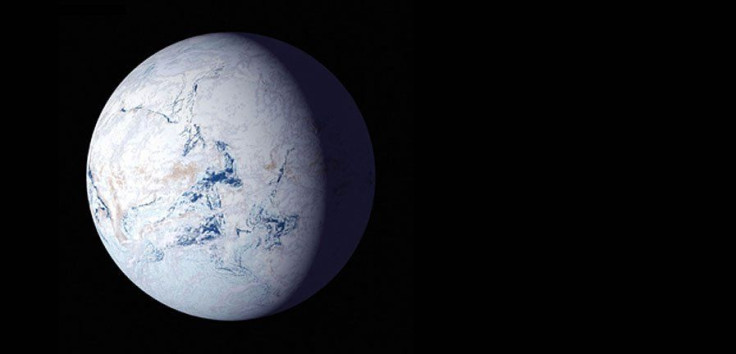Habitable Zone Exoplanets Could Become Snowballs, Losing Potential To Host Life

For years, scientists looking for life beyond Earth have been searching for planets sitting in the so-called habitable zone or the region in which an alien world is far enough from its host star to support liquid water and, possibly, some sort of microbial life.
Astronomers have identified a bunch of planets in this zone, but if a new study is anything to go by, despite being at the right place in their stellar system, many of these worlds might have lost their potential to host life, if they had any.
The reason for this lies in the axial tilt and orbit of the planet in question, according to researchers from the University of Washington, who ran computer models in order to predict hospitability potential of planets orbiting in the "habitable zones" of G dwarfs or sun-like stars.
The group wanted to see how a planet’s obliquity — the angle at which its rotational axis tilts — and orbital eccentricity — the circular or elliptical shape of its orbit — could affect its potential to host life.
Earth hosts life with an axial tilt of about 23.5 degrees, which undergoes minor changes over a long period of time. However, if an Earth-like exoplanet witnesses a greater degree of tilt, it would experience an extreme ice age, the researchers discovered in their models.
“We found that planets in the habitable zone could abruptly enter ‘snowball’ states if the eccentricity or the semi-major axis variations — changes in the distance between a planet and star over an orbit — were large or if the planet’s obliquity increased beyond 35 degrees,” Russell Deitrick, the lead author of the study, said in a statement.
This would mean that all liquid water (if there) on the planet would freeze, leaving no room for the survival of life. The study also goes against previous studies which suggested planets with greater axial tilt would actually be warmer.
“While past investigations found that high obliquity variations tended to warm planets, using this new [modeling] approach, the team finds that large obliquity variations are more likely to freeze the planetary surface,” study coauthor Rory Barnes said in the statement. “Only a fraction of the time can the obliquity cycles increase habitable planet temperatures.”
Barnes added that the work demonstrates that Earth is a relatively calm planet and ice ages on distant, alien worlds could be much more extreme than we think. There, orbital dynamics could be the main driver of habitability.
That said, the group believes astronomers looking for life in the cosmos should not neglect the importance of orbital dynamics.
“If we have a planet that looks like it might be Earth-like, for example, but modeling shows that its orbit and obliquity oscillate like crazy, another planet might be better for follow-up with telescopes of the future,” Deitrick concluded.
© Copyright IBTimes 2024. All rights reserved.





















